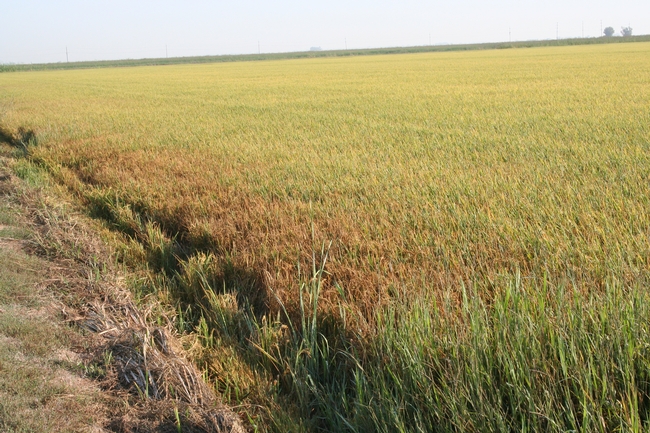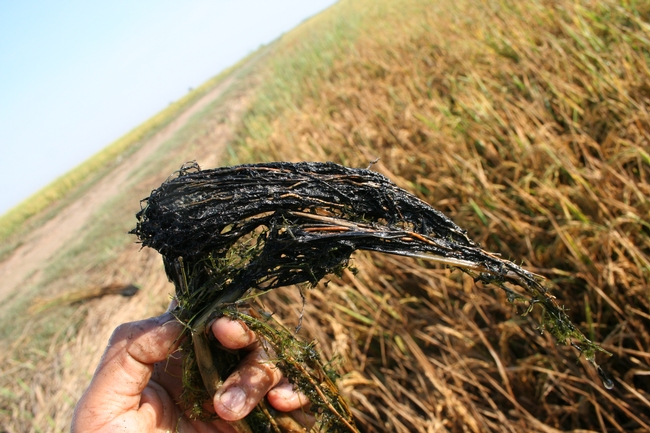I recently visited a couple of fields that were showing signs of sulfide toxicity. At first sight, the symptoms could be confused with blast. Plants dry out and turn brown, panicles blank out. However, plants affected by sulfide won't have any leaf or neck blast lesions. But the tell sign that sulfide toxicity is the issue are the roots. Affected plants will have black roots that smell like rotten eggs.
Sulfide toxicity occurs in patches, most likely, where organic matter accumulated and water flow is limited.
Roots of plants affected by sulfide turn black and smell like rotten eggs.
Sulfide toxicity happens when soil microbes use sulfate as energy source, and produce hidrogen sulfide as a by product. Normally, the sulfide will precipitate and won't accumulate, but in certain soils sulfide can accumulate and become toxic to the plant. Sulfide toxicity seems to be caused by accumulation of organic matter, such as straw or root balls, that do not decompose completely during the winter time. Irrigation water with high salt content can aggravate the problem, especially in areas where water movement is limited.
Aerating the soil stops the accumulation of sulfide, therefore, draining for harvest will stop the problem.

